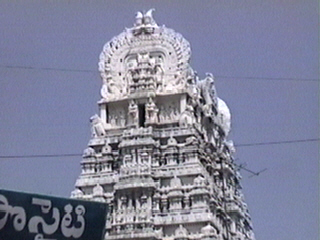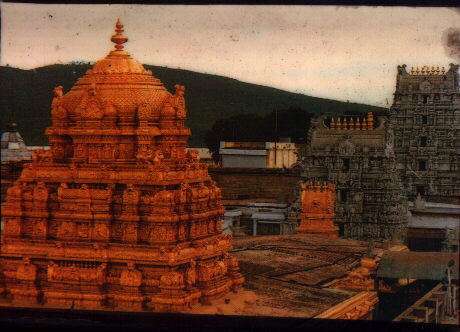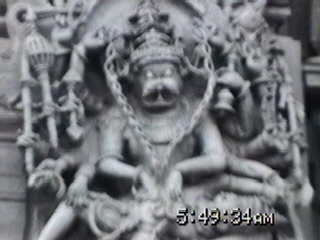Cast : Akash, Shamitha Shetty
Direction : Kodi Ramakrishna
Music : MM Keeravani
Year : 2006
Direction : Kodi Ramakrishna
Music : MM Keeravani
Year : 2006
Piliste Palukuta Telugu Mp3 Songs Free Downloads





Sthala Puranam : This pilgrimage centre is called "Dwaraka Tirumala" after the great saint, "Dwaraka" who located the self manifested idol of Lord "Sri Venkateswara" after severe penance in a ‘Valmikam’ (ant hill). The devotees call Sri Venkateswara as Kaliyuga Vaikunta Vasa. This place is also called “Chinna Tirupati”. As per Sastras North Indian rivers like Ganges and Yamuna are considered to be more and more holy as they go up to the origin and south Indian rivers like Krishna and Godavary are more and more holy as they go down the river to its mouth to the Sea. It is why there are numerous shrines and holy bathing ghats, at close intervals, on both sides of the great grand rivers Krishna and Godavary in their lower regions. The region covered by our Dwaraka Tirumala is commanding the top most conspicuous position in India, being garlanded by these two great Indian rivers Krishna and Godavary, as pointed out by Brahma Purana. The devotees who wish to go and offer their donations, or tonsures or any other offerings to Lord Venkateswara, Lord of Tirumala Tirupati, called as “Pedda Tirupati”, due to some reason, if they are unable to go there, they can offer their donations, prayers and worship in Dwaraka Tirumala temple. Dwaraka Tirumala is a famous temple from the ancient times. According to some Puranas, the temple is popular even in Kruta yuga and is still attracting the devotees. According to Brahma Purana, Aja Maharaja, the Grand father of Lord Sri Rama also worshiped Lord Venkateswara for his marriage. On his way to the ‘Swayamvaram’ of Indumati, he passed by the temple. He did not offer prayers in the temple. The bride Indumati garlanded him, but he had to face a battle with the kings who came to the Swayamvaram. He realized that the battle was thrust on him for ignoring the temple on the way. After realizing this, Aja Maharaja prayed to the Lord Venkateswara. Suddenly the kings stopped the battle. It is a great wonder to see two main idols under one Vimana Sikharam. One idol is a full and complete statue. The other is a half statue of the upper portion of the form of the Lord. The upper potion of the form is a self-manifested idol located by Sage "Dwaraka". The saints of the yore felt the prayers to the Lord are not complete without worshipping His holy feet. So, the saints joined together and installed a full statue behind the self-manifested idol, to worship the feet of the Lord according to Vaikhanasa Agamam. It is believed that the prayers to the smaller statue of the Lord will lead to Moksha, and the big form stands for Dharma, Artha and Kama. The Tiru kalyanotsavam is celebrated twice a year. One for the self manifested idol in the month of “Vaisakha” and the other for the installed idol in the month of “Aswayuja”. MAGNIFICIENCE OF THE SANCTUM SANCTORUM: On entering the sanctum sanctorum, one feels a most inspiring and enchanting experience. The presiding mythological deity Lord Venkateswara is visible upto the Bust size and the lower portion is imagined to be in the earth. The holy feet are said to be offered to Bali Chakravarthi in “Patala” for his daily worship. The full size idol of Lord Sri Venkateswara standing at the back of the main idol is said to have been installed by the great social reformer Srimad Ramanuja of the 11 th century. The idols of Padmavathi and Nanchari are installed in the Arthamandapa facing east. This is a full equipped shrine to be a Divyasthala. COMBINATION OF SIVA AND VISHNU ON ADISESHA: The most peculiar aspect here is that the hill appearing to be a serpant in form, even to the naked eye, confirms the mythological version that Anantha, the serpant king has taken up this terrestial form of serpant hill and is carrying God Mallikarjuna on the hood and Lord Venkateswara on the tail, thus creating a happy and harmonious compromise of Vaishnavism and Saivism at a single place. RENOVATION AND ORIGIN OF THE PRESENT STRUCTURE: The magnificent monuments like, Vimana, Mantapa, Gopura, Prakara etc., stand to the credit of Dharma Appa Raoa recent ruler (1762 – 1827) and the golden ornaments and silver vahanas stand to the credit of the generous queen Rani Chinnamma Rao of Mylavaram, Krishna Dist. (1877 – 1902). These things immortalize the glory of the shrine. The main temple is a masterpiece of South Indian Architecture with its five-storied main Rajagopuram facing the south and three other gopurams on the other three sides. The Vimana is in the Nagara style and old Mukhamantapa is extended to a great extent to suit the present day needs. There are several temples of Alwars attached to the Prakara on all sides. The whole spacious compound has been paved with stone and flower trees are grown in an order as if to feast the eye of the pilgrims. | |
| |